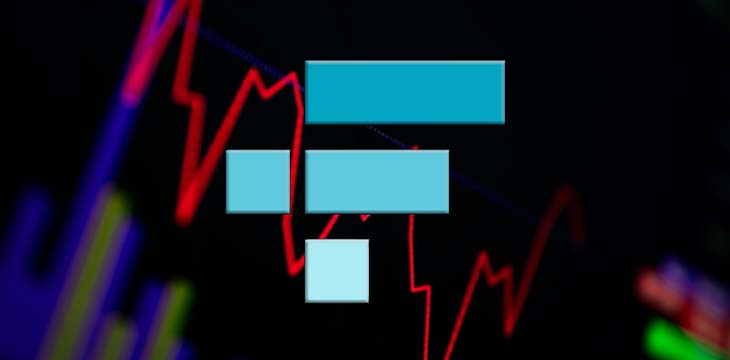Sam Bankman-Fried is the co-founder of FTX, a cryptocurrency exchange which Forbes says currently accounts for 10% of all digital asset derivative trading each month. He also runs Alameda Research, a trading company raking in more than a billion dollars in profit a year and is invested in countless more digital asset companies—some more publicly than others.
Like many investors in the digital asset industry, Bankman-Fried and his network of companies have done very well out of the recent boom, particularly out of their interest in exchanges and market makers.
The ongoing Tether fiasco has revealed that unbacked USDT is likely being printed and then swapped for BTC on exchanges, artificially inflating the price of BTC while exchanges enjoy ballooning commissions from both the processing of USDT and the general rise in speculative activity that these price boosts are inviting.
But Bankman-Fried and FTX’s ties to Tether go beyond merely enjoying the increased activity that Tether’s constant printing brings to exchanges throughout the ecosystem. Much of the digital asset industry is made up of a closely-aligned network of companies, as well as individuals and their financial interests, so it’s relatively easy to get the measure of a person and their affiliations based on who they defend.
Bankman-Fried is no exception to this. He’s been an outspoken defender of Tether, even at a time when the New York Attorney General’s investigation was proving that the stablecoin wasn’t actually stable at all:
It's sort of funny hearing people claim that you can't create/redeem USDT for $.
Like, I don't know what to tell you, you can, and we do. https://t.co/8XthTsk1xr
— SBF (@SBF_FTX) January 12, 2021
Has a crypto-bro ever tweeted out “I don’t know what to tell you” and not been trying to pull the wool over your eyes? Bankman-Fried was likely well aware at this point that in Tether’s user agreement, they accept no obligation to redeem a single USDT, and he mischaracterizes the concern surrounding Tether by implying that because he has been able to sell his Tether, everyone else holding the some $73 billion worth of USDT will be able to do the same once everyone begins to run for the exit.
Days later, the NYAG released the results of their investigation, confirming that Tether had been lying about its backing. At the same time, Tether and their general counsel Stuart Hoegner outright lied to their customers about the outcome of the NYAG investigation, saying that the investigators made “no negative findings whatsoever that tethers were not fully backed, nor were ever issued without backing.”
Fried endorsed the lie immediately, tweeting his congratulations to the Tether team and saying that “the Tether FUD was never grounded in truth.”
Well, it should come as no surprise that just a mere month after Bankman-Fried so nonchalantly defended Tether as though he was an impartial observer, his company FTX became the single biggest recipient of over a billion dollars’ worth of newly minted USDT in February 2021.
More than that, independent research done by Protos also confirmed that Alameda Research was the recipient of nearly a third of all USDT ever printed—and 86% of that was minted in the last year. Of the USDT sent to Alameda, 87% went directly to FTX, 12% went to Alameda’s wallets on Binance, Huobi and OKEx, while the remaining 2% (still accounting for a huge $705 million worth) went to non-exchange addresses.
Remember that if Tether is telling the truth that every USDT in circulation is backed by US$1 cash (or cash equivalents), this should mean that FTX was fulfilling over half-a-billion dollars’ worth of USDT orders for its customers. Given the splits identified by Protos (particularly the non-insignificant amounts destined for non-exchange wallets), this doesn’t seem likely to have happened with the newly minted USDT being sent from Tether to Alameda.
This is further echoed in research done by the Journal of Finance, which last year demonstrated that the exchanges in receipt of newly minted USDT are typically sending them directly to subsidiary exchanges, which almost always results in positive moves in the BTC price within hours.
And despite what Bankman-Fried’s early 2020 tweets would imply, he (or at least FTX) was closely connected with the Tether team for quite some time. FTX’s current chief compliance officer and former general counsel is Daniel S. Friedberg, who previously worked with Tether’s general counsel Stuart Hoegner on the Ultimate Bet/Excapsa disaster. Friedberg himself was caught on tape advocating that Ultimate Bet cover up a cheating scandal by lying in order to shift the costs to another company.
Bankman-Fried sued over market manipulation
Bankman-Fried is no stranger to accusations of market manipulation. In 2019, a lawsuit was filed accusing Bankman-Fried, FTX and Alameda of running a RICO enterprise. The plaintiff (BMA LLC), who has also sued other exchanges for market manipulation, said the defendants, under the direction of Sam Bankman-Fried, tried to use Binance to dump hundreds of BTC calculated to cause an artificial price movement which would trigger cascading liquidations of customers on Binance and other exchanges, including FTX.
According to the suit, Binance’s own manipulation detection systems prevented the attempt, but the defendants have attempted similar moves on other exchanges “in a long-running, continuing enterprise engaging in a pattern of racketeering activity.” Binance’s Changpeng Zhao seemingly confirmed the attempt at the time, but after talking with the then-unnamed party said that it was accidental on their part. Yeah, right!
Alameda took to a Medium blog to blast the litigation, calling it an inaccurate nuisance suit. The same blog was later updated to claim that it had been successfully dismissed; however, records showed that the suit was voluntarily dismissed with prejudice—which almost always means that an out-of-court settlement was reached.
Nothing more came out of the claims, although in 2020 the U.S. Securities and Exchange Commission (SEC) received a public submission accusing Bankman-Fried, Alameda and FTX of buying the silence of potential and actual litigants, and then later claiming their complaints were dismissed in court for lack of substance—which the submitter says specifically happened with the BMA suit.
Either way, the civil suit never reached court.
As of the end of 2021, FTX is enjoying huge increases in volume. The company’s U.S. business reported a 512% increase in average trading daily volume for Q3 2021. Coincidentally, Q3 is the period when Tether suddenly printed 2.3 billion new USDT after two months of inactivity.
SEC rejects Bitcoin ETF, citing concerns over Tether ‘fraud’
While the likes of Stuart Hoegner and Sam Bankman-Fried doing their best to pretend there’s totally nothing unusual with Tether stablecoin printing billions of new tethers in single days, the SEC has started to take note.
We did hear some grumblings on whether Tether would ever provide a financial audit way back in May, when CTO Paolo Ardoino said they were “discussing” an audit. Then in July 2021, Stuart Hoegner told Tech Check CNBC host Deirdre Bosa that Tether would conduct an audit in “a matter of months.”
We can assume that Tether have spent the intervening months unsuccessfully trying to find a reputable accountant willing to pretend that their reserves indeed exist, because in October Ardoino seemed to have changed his tune: in response to criticism that Tether had still not provided any audit, he simply tweeted that “no stablecoin has a formal audit, only attestations. More ClownDesk than CoinDesk. Nice clickbait headline.”
You’re right that no stablecoin has provided an audit, Paolo. Where you’re wrong is assuming that this makes the Tether ponzi any less of a fraud. Much to the chagrin of Hoegner and Ardoino, forensic financial research firm Hindenburg Research announced the “Hindenburg Tether Bounty Program” in October 2021 which offered up to $1 million for information leading to previously undisclosed details about Tether’s backing.
The SEC is now coming to terms with the Hindenburg-sized problem Tether poses to digital asset markets: VanEck’s proposed Bitcoin ETF was rejected by the securities regulator earlier this month with the regulator listing “manipulative activity involving the purported ‘stablecoin’ Tether (USDT)” as one of the reasons.
Birds of a feather
So, Bankman-Fried has already been caught defending one of his secret gravy trains in Tether—what else is he involved in?
For starters, one of FTX’s earliest investors was Binance, a company that was caught actively planning to undermine anti-money laundering and law enforcement activity around the world in 2020. Binance and FTX entered into a strategic partnership in 2019, the stated purpose of which was for FTX to help build out the liquidity… across the Binance ecosystem.
The two companies appeared to be close partners until the they cut ties in July of this year, with FTX buying out Changpeng Zhao’s stake in the exchange.
Comments from Bankman-Fried at the time made it seem as though he wanted to avoid the fallout when regulators inevitably caught up to Changpeng Zhao:
“I’m not involved in the conversations between them and regulators, and so all I can do is speculate, but something I’ll say is that we try really hard to be as cooperative as we can with regulators… I think that when you don’t do that, and when you sort of appear less flexible or responsive, I think that’s more likely to lead to cases where regulators might feel like they have no choice but to start bringing the hammer.”
Changpeng Zhao is undoubtedly a fatter target for law enforcement than Bankman-Fried, FTX and Alameda, but perhaps not by much.
In addition to Tether, Bankman-Fried has long been pumping Solana and the SOL token, calling the former one of the few blockchains that can scale to accommodate the enormous number of users and transactions that come with mass adoption. Solana’s claim of “scaling ability” was put to test—and proven to be a lie—in September when a flood of transactions and bot activity shut down the network for more than 17 hours and caused SOL’s market value to drop by as much as $20 billion. Any kind of technical performance lie to promote the value of a product, in this case Solana, is a type of consumer fraud and can be criminal by itself—and with the regulators keeping a close watch on blockchain projects and cryptocurrency scams, it’s only a matter of time before Solana is flagged.
Unlike with Tether, Bankman-Fried’s financial interest in Solana has always been relatively public: Bankman-Fried’s Alameda Research is a direct investor in Solana and Solana-based startups. He also founded a successful decentralized exchange called Serum on the Solana network in August.
Unsurprisingly, in March of 2021, Tether announced that it would be launching its USDT tokens on the Solana blockchain.
Between Tether and NFTs, Solana has received much attention over the last year. Advertising itself as one of the fastest blockchains available, and with an initially (and supposedly) strictly limited supply of 8,258,354, speculators filed in and pushed the price from under a dollar when it opened in April of 2020 to as high as $260 in November.
Like Tether and their audit-that’s-actually-just-a-pie-chart, the 8,258,354 number was emphatically cited by Solana’s representatives as interest in the token was building early in 2020. Also like Tether, these representations turned out to be entirely untrue. Within a month of Solana’s release, CEO and co-founder Anatoly Yakovenko was forced to admit that the number of Solana tokens in circulation was more than double than what the company had been representing until that point.
“Forced” is an adequate way to describe it: the announcement was only made after the Solana community discovered a single SOL wallet which contained over 13 million tokens, more than the total number of coins that were supposed to be in circulation.
According to Yakovenko, the wallet belonged to a market maker which Solana had lent 11,365,067 tokens for the purpose of market liquidity. Following public backlash, Yakovenko said that Solana would be retrieving the 11,365,067 coins back from the market maker and burning them.
So, Solana had committed to rectifying the problem: the number of tokens in circulation was to shrink back to the original 8,258,354 figure that was promised, and as a result, the price of SOL broke through 70c for the first time in its history, recapturing the ground it had lost when the rogue wallet was first discovered and then some.
Only Solana never made good on its promise. In fact, it did the total opposite of what Yakovenko said it would do. Two months later, in May, Solana announced that it had actually recovered 3.365 million out of the 11.365 million it was supposed to take back from its market maker. Not only was it not going to burn the remaining 8 or so million as it promised, Solana would be issuing new 8 million Solana tokens and burning those (at a non-specific later date) instead.
What this meant was that rather than having just over 8 million SOL in circulation as the company had repeatedly promised its token investors, the circulation at the time of the May announcement was more than 16 million. I wonder how the regulators are going to feel about all this activity?
Even more like Tether, much of the mainstream digital asset community did not think critically about Solana’s promises, as you can see from the pump right after they initially announced the burning of the 11 million surplus tokens. The SOL circulation has since grown exponentially, as has the price of the token itself.
This deception is in part enabled by people like Sam Bankman-Fried, who as we know from Tether, is only too willing to endorse any fraud as long as he’s seeing some of the action in return.
Follow CoinGeek’s Crypto Crime Cartel series, which delves into the stream of groups—a from BitMEX to Binance, Bitcoin.com, Blockstream, ShapeShift, Coinbase, Ripple and
Ethereum—who have co-opted the digital asset revolution and turned the industry into a minefield for naïve (and even experienced) players in the market.
New to blockchain? Check out CoinGeek’s Blockchain for Beginners section, the ultimate resource guide to learn more about blockchain technology.








